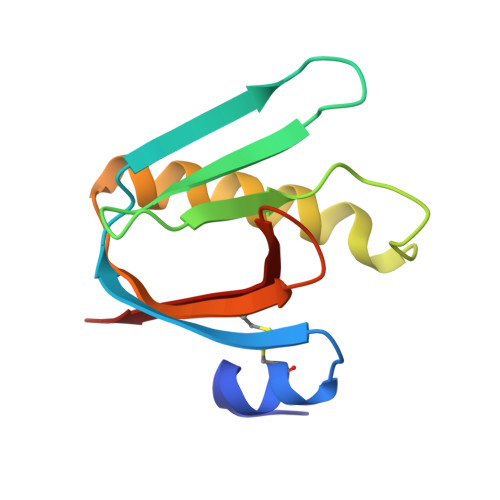Anchor-based design of improved cholera toxin and E. coli heat-labile enterotoxin receptor binding antagonists that display multiple binding modes.
Pickens, J.C., Merritt, E.A., Ahn, M., Verlinde, C.L., Hol, W.G., Fan, E.(2002) Chem Biol 9: 215-224
- PubMed: 11880036
- DOI: https://doi.org/10.1016/s1074-5521(02)00097-2
- Primary Citation of Related Structures:
1JQY, 1JR0 - PubMed Abstract:
The action of cholera toxin and E. coli heat-labile enterotoxin can be inhibited by blocking their binding to the cell-surface receptor GM1. We have used anchor-based design to create 15 receptor binding inhibitors that contain the previously characterized inhibitor MNPG as a substructure. In ELISA assays, all 15 compounds exhibited increased potency relative to MNPG. Binding affinities for two compounds, each containing a morpholine ring linked to MNPG via a hydrophobic tail, were characterized by pulsed ultrafiltration (PUF) and isothermal titration calorimetry (ITC). Crystal structures for these compounds bound to toxin B pentamer revealed a conserved binding mode for the MNPG moiety, with multiple binding modes adopted by the attached morpholine derivatives. The observed binding interactions can be exploited in the design of improved toxin binding inhibitors.
Organizational Affiliation:
Department of Biological Structure, Howard Hughes Medical Institute, University of Washington, Seattle, WA 98195, USA.















